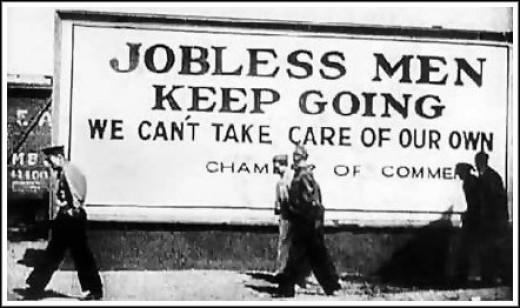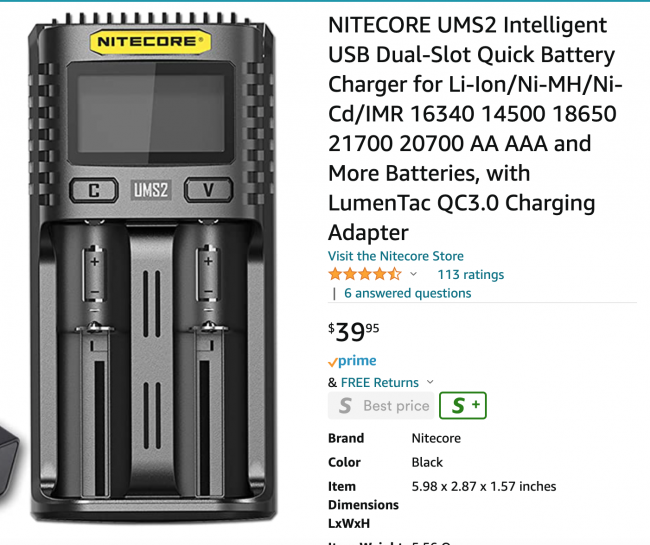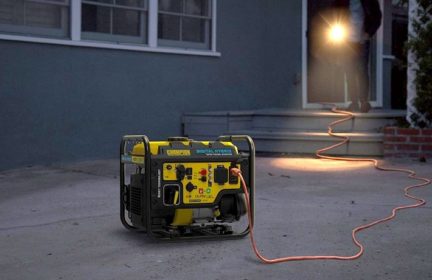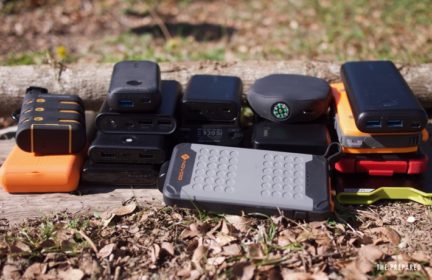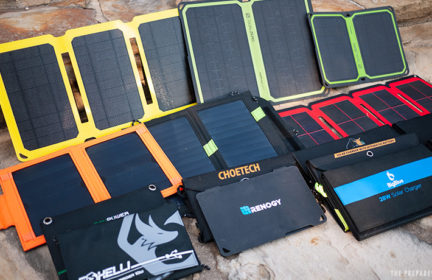Do you really need small portable solar power?
Not trying to be controversial, just trying to think through the benefit of portable solar. Recently bought a 28W panel, which was damaged so I’m returning it but got me thinking that I’m not quite sure it’s place. To be fair, I have a 2200W inverter as well, and some way of generating more power is good. But I also have a couple battery packs, and tool batteries with a USB converter.
My current thinking is I have enough stored power for a short term disruption. I have fuel for on inverter to run it for maybe 40ish hours. And from past events it only needs run sporadically. We live in a hurricane zone so wouldn’t be my first round.
Anyway… I’m finally getting to my point (I think) small apartment, no storage, urban environment that you’d want to evacuate in SHTF scenario it makes more sense to get portable power generation. I’m more likely to bug in it seems, and if we get past my short term needs then being able to charge a mobile phone probably isnt gonna help. If we need to evacuate, the. It’s cause of a hurricane etc which is more localized and you can move to areas where power isn’t the issue.
So am I wrong? What am I missing or failing to consider? I know The Prepared advocates not fixating on a particular situation but also doesn’t advocate waste so I’m curious what people think.
On top of that I’m curious peoples thoughts on what common items for BOB/GHB etc maybe they don’t see as much use for. Just curious how people approach stuff.
-
Comments (27)
-
RedneckContributor - March 30, 2022
IMO, keeping your cell phone charged just might be the most important thing a person can do. It can keep you informed about what is going on, can be a lifeline between you and others and can be loaded with all sorts of useful tools. So I think having a small, travel solar panel makes lots of sense. It ensures you can keep this critical device charged, even in a long term emergency. I have a Goal Zero Nomad that folds up & takes up very little space.
-
NewPrepper - March 30, 2022
Bill, what are you using for a larger panel? I’ll agree, larger scale solar is interesting. We want to build in a couple years and a small scale solar generation for power outages is of interest.
Redneck, I see your point, I just question if the infrastructure is online at that point to make your phone anything more than a paperweight. Lived through Hurricane Florence in NC a few years back. You could make some calls and texts but any data was out. I don’t think that situation would improve, long term once cell generators ran out of fuel it’d be silent. So I just wonder the need to keep it powered beyond say a week which is covered by battery storage, not necessarily solar generation.
Again not trying to be argumentative, just examining my thinking and that of others (who are more knowledgeable than me.)
-
RedneckContributor - March 30, 2022
You are not being argumentative. You won’t find that here on this site.
I personally believe in redundancy. I have power banks, a couple of solar generators, a few large 280W solar panels, a 7500W duel fuel portable generator… and the small, portable solar panel.
Who knows what emergency we might face & what services will be available? Who knows where we will be when the emergency happens? I’m too old to bug out but besides the power banks I keep in my truck, the Nomad folding solar panel goes in there too. Just in case.
-
hikermor - March 30, 2022
I live in wildfire country (Cal) and the power companies cut power when fires threaten an area – the most we have experienced is three days.
keeping the phone charged is very useful. Also lights, etc. I am developing a mix of power banks, rechargeable batteries, and portable solar panels as well
This comes in handy on field projects and camping trips, as well.
Situations vary from place to place….
-
JBinAZ - April 18, 2022
Hi, New Prepper. The main thing I would want my phone for is for the library of books I have downloaded onto it. The ability to have medical knowledge, bushcraft knowledge, edible plant knowledge, gardening knowledge, maps, etc. available is worth the space of a cell phone, foldable charger and portable power bank.
I, personally, have a dedicated ipad mini just for this. It stays in a faraday bag at all times, except for when updating and downloading book purchases. I do have hard copies of my top books, which would ideally bug out with me if I could do so with car or bike with trailer, but no way could or would I bring them if in a leave on foot scenario.
-
NewPrepper - April 21, 2022
That’s admittedly one of the better reasons I’ve heard and a very valid point.
-
-
pnwsarahContributor - March 30, 2022
I echo what others have said about charging a phone; that’s 95% of the reason I bought a portable solar panel (I chose the one TP rated best for low-sunlight conditions in this review). In the event of an earthquake (or even a serious winter storm or fire evac), I’d want to be able to try to get a text through to my out of area contact— and hope for a return text to get through eventually. This seems especially important given how quickly cell batteries lose their ability to hold a charge (I’m about to have to replace mine… again…). It sounds like @hikermor and I are taking a similar approach. I definitely took my power “system” when we went van camping in BC for three weeks last summer, and it was super useful and great to test everything out. I tend not to bother on weekend outdoor trips, both because I don’t want to be taking things in and out of the BOB that much and don’t want to use the phone that much, but for the multiweek trips we take 1-2 times per year, it’s great practice.
Having said that, there are several common BOB items that I’m probably never going to include in my setup, mainly because I’m really not into bushcraft. I gave it the college try— literally, in fact: I took a class on it in college— but it’s just not something I find fun, and I don’t focus my prepping on surviving in the wilderness in a long-term grid-down scenario. Which is not to say I’m not worried about a long-term grid-down scenario— I am, but I try to channel those anxieties into organizing, collective action, and policy change that might prevent such outcomes. For me, individual prepping isn’t the tool for dealing with the prospect of a collapsed society on a ruined planet.
This isn’t something I say from an imperious or judgmental place… I am not under the illusion that my professional or volunteer advocacy and policy work is really going to move the needle on these global issues. I just don’t have a lot of faith in my ability to individually prep my way out of these problems, either. Given that none of the pathways before me seem like a sure route to a thriving future, I’m going to follow the one I will enjoy walking, and I do not enjoy starting fires with sticks. 🙂
-
atlanticrando - April 22, 2022
Really appreciate your points here. Like the OP, I’m kind of struggling with what’s overkill for the most likely scenarios, especially in an urban area.
I enjoy some outdoor activities, but I hate camping and there are some bushcraft skills I’m just not going to be great at.
I think your last point is really underappreciated in some prepper communities that glorify the last man standing or homesteader community ideals. The solutions to (or at least mitigations for) a lot of things preppers are concerned about tend to be large-scale problems that require collective action.
-
pnwsarahContributor - April 22, 2022
Thanks, @atlanticrando. I appreciate your appreciation, and I’d be interested in hearing more about your struggles re: what’s overkill, especially given that we apparently share status as urbanites. I bet there is at least some overlap in our respective internal debates. 🙂
-
-
Pops - April 21, 2022
Back when power lines were first being strung the very first thing people did was wire in a light socket. Didn’t matter if the power wasn’t coming for months or years, they were ready for that light bulb!
The thing about lighting is it extends the number of hours work you can get done. Not all outages entail simply sitting and waiting. Some scenarios are open ended, say grid or gas pipeline hack, CME, EMP, worse — could entail going straight to survival mode. Lighting in an emergency is right up there with water and food because you will need to be actively doing stuff to stay on top.
I have lots of lighting options from candles/lamps to ICE genny, to AA batteries but they all eventually run dry. Solar is unique in that once you have it, barring failure, it is going to keep your lights pumping out the photons just about indefinitely—especially combined with a modern battery.
Those above are extreme scenarios. We got along fine for 3 weeks on a genny after an ice storm once and we were on a well with livestock to water. It depends on what you are preparing for and what your concerns are. If the power in the situations you are concerned with will return fairly quickly you probably have it covered.
I don’t feel bad about questioning the conventional wisdom. Everyone has different particulars and can, should, decide what’s right for them. In the case of the BOB, the question for me is Bug out to where? Just as you say, if things are that peachy over the county line I’ll just grab my wallet, drive there and rent a motel room.
In most every case where the problem is widespread, Don’t be a refugee is the number one thing on my to do list! At my house, even if it is an apartment, I have legal rights and they extend beyond even whatever breakdown in the law because I am the rightful tenant. Being “out there” on the road means I have exactly one right, the right to keep going.
I always feel better off at home, even if home is a smoking hole, so home is where I concentrate effort rather than packing and repacking for the refugee camp. LOL
-
HappySoul - April 21, 2022
Good Evening NewPrepper,
I applaud you taking time to think through what your needs and priorities will be when the next big emergency event comes. Let me offer a perspective on your question of keeping your cell phone charged up. I spent 40 years working inside one of the “biggie” telephone companies, doing their network electronics, fiber optics, and microwave goodies. One caveat first. I retired a bit over three years ago, and in telecom, two-year-old information is “ancient”. Working the job however, gave me the chance to talk with hundreds of other telecom technicians all over the US and Canada. There are a few principles that apply nation wide.
Whatever comes up the next time the bananas hit the fan, you will be looking at either a “bug in” or a “bug out” scenario. I’m a great fan of the “bug in unless forced out” school of thought. But either way, being able to communicate is HUGE to your morale, your ability to protect yourself and your loved ones, and being able to help yourself and those around you. In a “bug in” event, if the event is bad enough that is has knocked phone voice service off-line, virtually all phone companies prioritize bring cell service back on line first, before land lines. And, that may not take as long as you think. Even if cell phone antennas / buildings have been destroyed, cell service is routinely restored by rolling in trucks called COW’s (Cell on wheels), or COLT’s (Cell on light trucks). Once in place, they simply crank up (telescoping) antennas, spin up on board generators, run diagnostics, and start hauling cell traffic, usually in under an hour. And text messages will usually move even when voice traffic will not because of overloading. When you call 911, land lines will generally show the emergency dispatcher the street address you are calling from. when you call 911 from a cell phone, the emergency dispatcher will see a map showing where you cell phone is, but the accuracy of that location could be anywhere from within a meter to within 300 to 400 meters depending on the area you are in and whether or not all the cell towers around you are in service. Lots of areas have “smart 911” programs where you can voluntarily register your home address to be matched with your cell phone in emergency databases. If you do that, generally when you call 911, the emergency dispatcher will see both a map of where your cell phone is located, AND a graphic that shows the home address that you voluntarily registered. That can be a VERY good thing if you can’t talk because you’re choking on something and live in a large apartment building.
In a “bug out” event, a charged cell phone can be “pinged” for its location by authorities. Emergency dispatchers, say, working a large wildfire, can simply take an electronic stylus to an electronic map of the fire on their screens, draw a circle around the fire area, and whatever distance they like outside the fire perimeter, say 10 miles, and punch a button. A few seconds later, every cell phone within 10 miles of the fire area gets a warning message to evacuate. And rescuers can find you WAY EASIER if your cell phone is on, as it is chirping its location to all cell towers within range of the phone. And that chirping is BIG to rescuers, because it also gives them a pretty decent estimate of how many locations in the fire area have people there.
So, enough “information overload”. The point is simply that, for all the reasons above, I’m a big advocate of having a cell handy all the time, and of having (redundant) ways to keep the thing charged all the time. Panels, car chargers, wall outlet chargers, they’re all good. Heck, I just bought a lounge chair / recliner that has a USB jack on the side of the chair without even realizing it until they delivered the chair! Also, keep track of how old your cell phones battery is, and get it replaced before it gets so old it won’t hold a charge. You do NOT want a cell phone dying on you 20 minutes after you took it off the charger. Thanks for reading!
-
brekke - April 21, 2022
I’m a big believer in redundancy, so I try to buy things that can be used in more than one way. For my generator, it’s dual fuel. But I also have a Jackery that can be charged via wall outlet, generator, my car or the solar panel. I use a CPAP at night, so the portability, longevity of the charge, and multiple charging options of the Jackery give me the ability to run my CPAP no matter how long the power outage lasts.
For our BOBS, they serve two purposes: 1. We frequently travel through a wooded/mountain area that has no cell service and frequent landslides that could cut us off from returning home for several hours or overnight. 2. Wildfires are a concern and quick evac may be required. With two young children our bags have what we need to be away from home for up to 3 nights, basic first aid, and water purification, but not necessarily all the other things someone that is planning to hike through the woods would have. Our car has a larger kit with flares, water, food, tools, jumper cables, fire extinguishers, ax, trauma kit, and blankets. We keep our BOBS either in the car or in the garage next to the car for quick evac.
We also have a BOB for our pets and their carriers stored next to the car in case of a wildfire evac.
-
Forager - April 22, 2022
Need, no. I think of it as more like a comfort item. My main reason for wanting to keep my phone working as long as possible even in a complete grid-down scenario, as silly as this probably sounds, is for the alarm clock feature. Do I have a wind up alarm clock that strikes two bells with a hammer? Yes, but that thing is JARRING to wake up too, and also disturbs the rest of the household/campsite. A quiet musical alarm that peacefully wakes just the individual who needs to be woken is a really valuable tool, especially if you are getting up repeatedly during the night for some reason.
-
RedneckContributor - April 22, 2022
Sometimes I think we fail to realize how many useful features are on a smartphone. You like the alarm, but there would also be a large list of additional functions a phone can perform & be very useful in a crisis.
Camera, voice recorder, level, compass, note taker, music player, all sorts of clock functions, calendar with reminders, calculator, magnifier, measuring device… plus a host of apps that can be added to any phone.
Hard to imagine any one, rechargeable device that can do more.
-
JBinAZ - April 22, 2022
Let us not forget a library of books 🙂
-
-
rangerjohn - April 27, 2022
I put together a kit literally based off from the recommendations from this site.
My kit includes a three way outlet adapter, a dual port wall/car charger, a portable solar panel, a Goal Zero Guide 10+ battery charger/recharger (I paid premium price for mine, because they are discontinued), a Anker 10,000mah solar powerbank, a gereric 5000mah powerbank, a Nebo 360 2500mah powerbank (also a light and fan) a bunch of Enloop batteries, a four bay charger for them, and an assortment of cables.
This kit should allow me to charge my personal electronics under almost any set of circumstances.
-
LBV - May 1, 2022
I have two solar panels. One goes along with a large battery (not practical if I bug out), and one small panel for my phone. The larger set is to run my CPAP machine as I have sleep apnoea. If I have to bug out quick I won’t have time to grab my CPAP, so larger solar kit is not practical.
-
NewPrepper - May 10, 2022
So I finally caved, y’all convinced me. In fairness, 50% of my question is just to get y’all to talk me into buying something!
Anyway, still not overly worried about a bug out scenario, but went with the 28W Big Blue, packable, but better output than more compact options, but still packable. Also added the Anker 10,000mah pack that the panel will charge. While thinking through things I realized without a wall plug, charging the Eneloops that I have plenty of would be tough. To that end I also added a Panasonic BQ-CC87. It takes USB charge input, and can double as a battery pack, with 4AAs holding 8,400mah if I recall. Haven’t had a chance to test if the solar will charge it directly, but worst case the Anker pack will. In a few years when we build I’ll put a better permanent solution in but this’ll work till then.
Panasonic K-KJ87MCA4BA Individual Battery Charger with Portable Charging Technology and 4AA Eneloop Rechargeable Batteries, White
-
Bradical - May 10, 2022
Looks like you have a good loadout now. My recommendation now is to try living off of just that panel and/or batteries for a week. Practice and trial is where you will really learn if it was a good buy for you, how long things take to charge, best times of day to charge, etc…
-
NewPrepper - May 12, 2022
Not a bad idea, not sure I’ll get a week of practice though. I did hook it all up and run it for a while. Seems to charge the Anker well, but only had about an hour to sit with it. I did have that in mind too, could the pack charge fast enough to power what you need to recharge daily… I think so but I’d like to measure time from fully depleted to fully charged. Also I bought the Big Blie cause it says it’ll do 4.8V out but I have no way to measure, but what if I charge 2 packs or a pack and phone etc. Fortunately I’m in the Carolinas, weather and sunshine are fairly cooperative here.
-
underprepraccoon - May 14, 2022
Hey hey I just picked one of those up too!
I also made the mistake of getting the basic one without the volt meter, but less parts to break down if we’re keeping them.
They seem to charge half decent.
They do make USB voltage checkers that are like 20 to 30 dollars that even have Bluetooth so you can check the power through it on your phone.
My budget was tight this semester cuz I needed some other items, so I would also recommend the android app Ampere. It tracks how much milliamps your phone or tablet is able to draw.
It’s helped me figure out when cords are bad, and when I didn’t plug something in properly. It’s not going to help you figure out what your power bank is getting, but you can get a good idea of What’s coming down and what weather works well enough.
I think using mobile solar chargers is also a soft skill that takes time to learn optimizing.
The way I’m using my battery packs and panels, we have fans with rechargeable batteries that we use for air conditioning, cuz the old house doesn’t have central. It’s very likely power goes out here in summer, even more so with the weird power supply issues now, so those can get topped off by the batteries at night, while rotating the packs to be charged during the day. Then they also charge the tablets, phones, any flashlight batteries, and the emergency radio.
Though the last time the power went out, I was mad needing some noise, so one of my old phones that doubles as a SDR scanner rig with a USB c hub, I downloaded a bunch of my music playlists. I’m also going to look into some shows, movies, and copies of where there is no doctor and other books hopefully.
Off loading media to the phone that won’t have data connecting will save my regular phone battery to get texts and alerts, and I can use the data for any info finding.
I’d also suggest magnetic plug charging cables, battery packs are heavy and a broken micro usb port will barely charge. Plus it saves wear and tear on the cables. The ones I use won’t fast charge, but they don’t need to
-
Jose Martinez - May 14, 2022
So the app Ampere allows you to test your cables and see which ones are the best at quickly powering your devices? I have a gallon bag full of old cables, so this would be a good way to weed out the junk cables.
-
underprepraccoon - May 15, 2022
Yes. I run it while charging a device from a wall adapter and cable for a reference number.
Then you can swap out the cable and see if it keeps charging at the same rate, and up to whatever the adapter supports.
It can also show you what a power bank can let out, though that’s probably limited by cables
-
pnwsarahContributor - May 10, 2022
That’s exactly what I got— Big Blue 28W + Anker PowerCore 10,000. I’ll be curious to hear how it treats you!
-
JBinAZ - May 11, 2022
When you’re ready to think about things further, check out the NITECORE UMS2 battery charger. It can charge from multiple sources, including solar panels, and can charge more than just AA or AAA batteries, such as different sized Li-ion, etc.
So many devices are now using Li-ion batteries and beyond, and that includes my essential small devices. I have a mix of different batteries in my devices (headlamp, flashlight, mini fan, radios, comms, etc)
-
rangerjohn - May 12, 2022
That is the unit that I have, as reccomended by this site.
I went with TP’s reccomended choices for my personal electronic devices power kit, because I am a newbie as regards this area (rechargeable batteries, etc.).
Edited to add, the unit I have is a four bay unit. My bad.
-
NewPrepper - May 12, 2022
I have to check the brand, I think it’s nitecore but I do have a 2 bay charger for 3.7v lion batteries for a couple flashlights I have. (Just kidding it’s the Fenix ARE-X2). Again the Anker will work worst case but I did want to see (and I think it will) if the Big Blue puts out enough stable current to charge these (and the Panasonic pack direct). I also have 7 LED lanterns that run AAs so I’m feeling decent about light. We’ve camped with them and a single charge will last a while.
-
-
- News of the Week 2024-12-30 - 6 hours ago
- (Official discussion) Rainy day funds and cash on hand - 2 weeks ago
- News for the Week 2024-11-18 - 2 weeks ago
- How to sew and repair a leather glove - 1 month ago
- Moooooooo…Can you rec a powdered milk? - 1 month ago
This forum is heavily moderated to keep things valuable to as many people as possible. Full community policies are here. The basics:
- 1. Be nice to each other.
- 2. Stay focused on prepping.
- 3. Avoid politics, religion, and other arguments.
- 4. No unfounded conspiracies, fake news, etc.
- 5. Debate ideas, not people.
